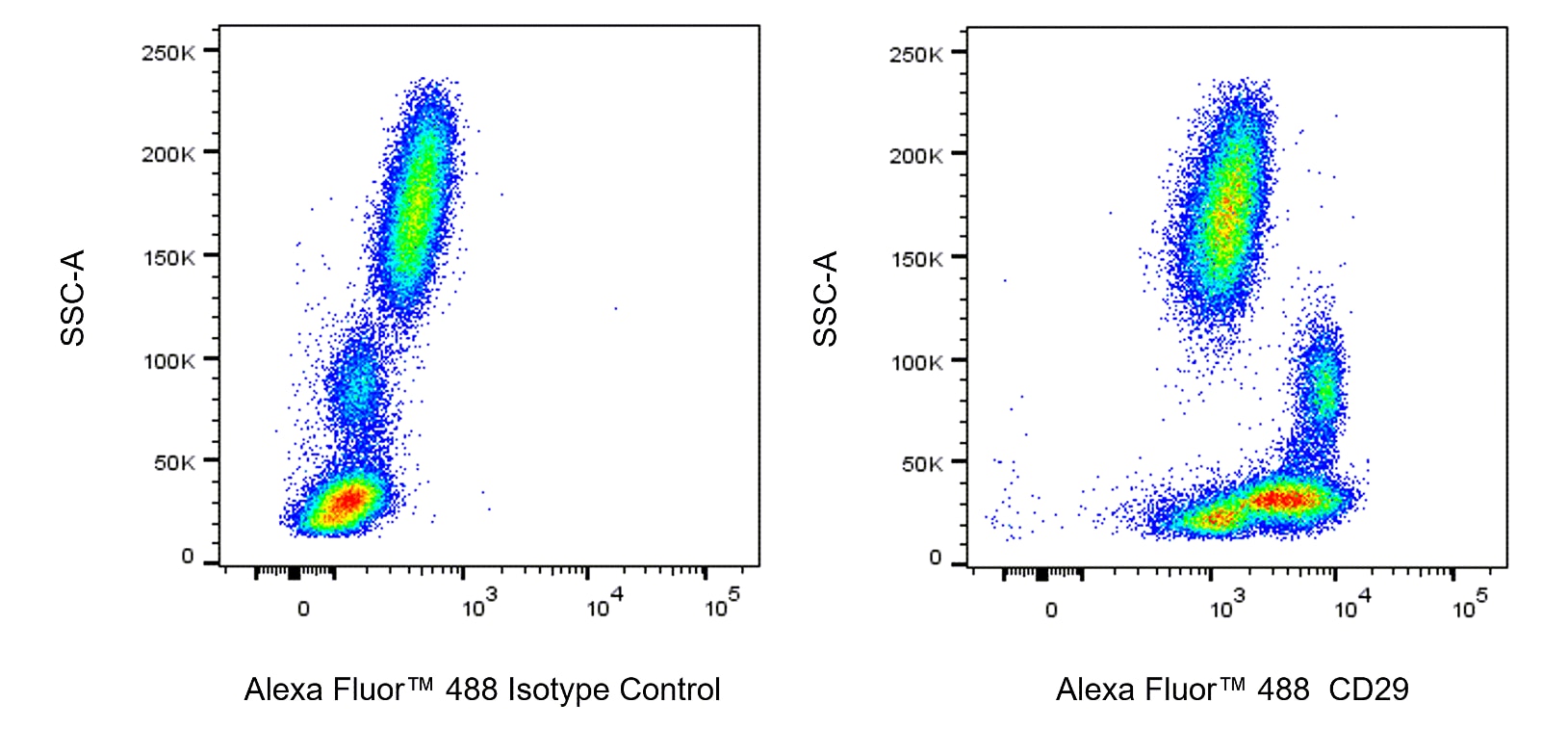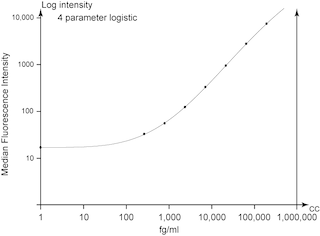-
抗体試薬
- フローサイトメトリー用試薬
-
ウェスタンブロッティング抗体試薬
- イムノアッセイ試薬
-
シングルセル試薬
- BD® AbSeq Assay
- BD Rhapsody™ Accessory Kits
- BD® OMICS-One Immune Profiler Protein Panel
- BD® Single-Cell Multiplexing Kit
- BD Rhapsody™ TCR/BCR Next Multiomic Assays
- BD Rhapsody™ Targeted mRNA Kits
- BD Rhapsody™ Whole Transcriptome Analysis (WTA) Amplification Kit
- BD® OMICS-Guard Sample Preservation Buffer
- BD Rhapsody™ ATAC-Seq Assays
- BD® OMICS-One Protein Panels
-
細胞機能評価のための試薬
-
顕微鏡・イメージング用試薬
-
細胞調製・分離試薬
-
- BD® AbSeq Assay
- BD Rhapsody™ Accessory Kits
- BD® OMICS-One Immune Profiler Protein Panel
- BD® Single-Cell Multiplexing Kit
- BD Rhapsody™ TCR/BCR Next Multiomic Assays
- BD Rhapsody™ Targeted mRNA Kits
- BD Rhapsody™ Whole Transcriptome Analysis (WTA) Amplification Kit
- BD® OMICS-Guard Sample Preservation Buffer
- BD Rhapsody™ ATAC-Seq Assays
- BD® OMICS-One Protein Panels
- Japan (Japanese)
-
Change country/language
Old Browser
Looks like you're visiting us from United States.
Would you like to stay on the current country site or be switched to your country?
BD Pharmingen™ Alexa Fluor™ 488 Mouse Anti-Human CD29
クローン TS2/16 (RUO)

Multiparameter flow cytometric analysis of CD29 expression on Human peripheral blood leucocyte populations. Platelet-depleted Human whole blood was stained with APC Mouse Anti-Human CD41a antibody (Cat. No. 559777/561852) and with either Alexa Fluor™ 488 Mouse IgG1, κ Isotype Control (Cat. No. 565572; Left Plot) or Alexa Fluor™ 488 Mouse Anti-Human CD29 antibody (Cat. No. 568989/568990; Right Plot). The erythrocytes were lysed with BD FACS™ Lysing Solution (Cat. No. 349202). The bivariate pseudocolor density plot showing the correlated expression of CD29 (or Ig Isotype control staining) versus side-light scatter (SSC-A) signals was derived from gated events with the forward and side-light scatter characteristics of intact leucocytes. Flow cytometry and data analysis were performed using a BD LSRFortessa™ X-20 Cell Analyzer System and FlowJo™ software.

.png)
Multiparameter flow cytometric analysis of CD29 expression on Human peripheral blood leucocyte populations. Platelet-depleted Human whole blood was stained with APC Mouse Anti-Human CD41a antibody (Cat. No. 559777/561852) and with either Alexa Fluor™ 488 Mouse IgG1, κ Isotype Control (Cat. No. 565572; Left Plot) or Alexa Fluor™ 488 Mouse Anti-Human CD29 antibody (Cat. No. 568989/568990; Right Plot). The erythrocytes were lysed with BD FACS™ Lysing Solution (Cat. No. 349202). The bivariate pseudocolor density plot showing the correlated expression of CD29 (or Ig Isotype control staining) versus side-light scatter (SSC-A) signals was derived from gated events with the forward and side-light scatter characteristics of intact leucocytes. Flow cytometry and data analysis were performed using a BD LSRFortessa™ X-20 Cell Analyzer System and FlowJo™ software.

Multiparameter flow cytometric analysis of CD29 expression on Human peripheral blood leucocyte populations. Platelet-depleted Human whole blood was stained with APC Mouse Anti-Human CD41a antibody (Cat. No. 559777/561852) and with either Alexa Fluor™ 488 Mouse IgG1, κ Isotype Control (Cat. No. 565572; Left Plot) or Alexa Fluor™ 488 Mouse Anti-Human CD29 antibody (Cat. No. 568989/568990; Right Plot). The erythrocytes were lysed with BD FACS™ Lysing Solution (Cat. No. 349202). The bivariate pseudocolor density plot showing the correlated expression of CD29 (or Ig Isotype control staining) versus side-light scatter (SSC-A) signals was derived from gated events with the forward and side-light scatter characteristics of intact leucocytes. Flow cytometry and data analysis were performed using a BD LSRFortessa™ X-20 Cell Analyzer System and FlowJo™ software.
.png)

BD Pharmingen™ Alexa Fluor™ 488 Mouse Anti-Human CD29
.png)
Regulatory Statusの凡例
Any use of products other than the permitted use without the express written authorization of Becton, Dickinson and Company is strictly prohibited.
Preparation and Storage
推奨アッセイ手順
BD® CompBeads can be used as surrogates to assess fluorescence spillover (compensation). When fluorochrome conjugated antibodies are bound to BD® CompBeads, they have spectral properties very similar to cells. However, for some fluorochromes there can be small differences in spectral emissions compared to cells, resulting in spillover values that differ when compared to biological controls. It is strongly recommended that when using a reagent for the first time, users compare the spillover on cells and BD® CompBeads to ensure that BD® CompBeads are appropriate for your specific cellular application.
Product Notices
- Please refer to www.bdbiosciences.com/us/s/resources for technical protocols.
- Alexa Fluor® 488 fluorochrome emission is collected at the same instrument settings as for fluorescein isothiocyanate (FITC).
- Source of all serum proteins is from USDA inspected abattoirs located in the United States.
- This reagent has been pre-diluted for use at the recommended Volume per Test. We typically use 1 × 10^6 cells in a 100-µl experimental sample (a test).
- An isotype control should be used at the same concentration as the antibody of interest.
- Caution: Sodium azide yields highly toxic hydrazoic acid under acidic conditions. Dilute azide compounds in running water before discarding to avoid accumulation of potentially explosive deposits in plumbing.
- For fluorochrome spectra and suitable instrument settings, please refer to our Multicolor Flow Cytometry web page at www.bdbiosciences.com/colors.
- This product is provided under an intellectual property license between Life Technologies Corporation and BD Businesses. The purchase of this product conveys to the buyer the non-transferable right to use the purchased amount of the product and components of the product in research conducted by the buyer (whether the buyer is an academic or for-profit entity). The buyer cannot sell or otherwise transfer (a) this product (b) its components or (c) materials made using this product or its components to a third party or otherwise use this product or its components or materials made using this product or its components for Commercial Purposes. Commercial Purposes means any activity by a party for consideration and may include, but is not limited to: (1) use of the product or its components in manufacturing; (2) use of the product or its components to provide a service, information, or data; (3) use of the product or its components for therapeutic, diagnostic or prophylactic purposes; or (4) resale of the product or its components, whether or not such product or its components are resold for use in research. For information on purchasing a license to this product for any other use, contact Life Technologies Corporation, Cell Analysis Business Unit Business Development, 29851 Willow Creek Road, Eugene, OR 97402, USA, Tel: (541) 465-8300. Fax: (541) 335-0504.
- Please refer to http://regdocs.bd.com to access safety data sheets (SDS).
- Alexa Fluor™ is a trademark of Life Technologies Corporation.
The TS2/16 monoclonal antibody specifically recognizes CD29 which is also known as Integrin beta-1 (Integrin β1 or β1 Integrin), Glycoprotein IIa (GPIIA), Very late activation protein beta (VLA-beta; VLAB), and Fibronectin receptor subunit beta (FNRB). CD29 is an ~130 kDa single pass type I transmembrane glycoprotein that is encoded by ITGB1 (Integrin subunit beta 1). β1 integrins constitute the largest subgroup of integrins as they form noncovalent heterodimeric complexes with at least 12 different alpha integrin (Integrin α) subunits. These heterodimeric β1 integrins mediate a variety of interactions between cells and between cells and the extracellular matrix that are involved in cellular signaling, growth, survival, adhesion, and migration. The family of heterodimeric β1 integrins includes receptors for vascular cell adhesion molecule 1 (VCAM-1), extracellular matrix (ECM) components such as collagen, fibronectin, laminin, and vitronectin, and some microbial ligands. The β1 integrin subunit is widely expressed on hematopoietic and non-hematopoietic cells including T and B cells, dendritic cells (DC), NK cells, monocytes and macrophages, granulocytes, as well as mast cells, fibroblasts, endothelial cells, epithelial cells, and stem cells. Platelets express high levels of CD29 (β1 integrin) and may be bound to leucocytes from human blood. Gating out cells expressing the platelet marker CD41a will avoid attributing platelet CD29 (β1 integrin) expression to attached leucocytes. The TS2/16 antibody is reportedly useful for multiple applications including flow cytometry, immunohistochemistry, and functional studies.
Development References (12)
-
Hemler ME, Bodorova J, Kawaguchi S, Weitzman J, Kassner P. Adhesion structures subpanel 6, β1 integrins/VLA: CD29/CD49. In: Schlossman SF. Stuart F. Schlossman .. et al., ed. Leucocyte typing V : white cell differentiation antigens : proceedings of the fifth international workshop and conference held in Boston, USA, 3-7 November, 1993. Oxford: Oxford University Press; 1995:1609-1612.
-
Hemler ME, Bodorova J, Pasqualini R. CD29 (integrin β1) cluster report. In: Schlossman SF. Stuart F. Schlossman .. et al., ed. Leucocyte typing V : white cell differentiation antigens : proceedings of the fifth international workshop and conference held in Boston, USA, 3-7 November, 1993. Oxford: Oxford University Press; 1995:1612-1613.
-
Hemler ME, Sanchez-Madrid F, Flotte TJ, et al. Glycoproteins of 210,000 and 130,000 m.w. on activated T cells: cell distribution and antigenic relation to components on resting cells and T cell lines.. J Immunol. 1984; 132(6):3011-8. (Immunogen: Immunohistochemistry, Immunoprecipitation, Radioimmunoassay). View Reference
-
Logdberg L, West S, Vattay A, Dottavio D. Soluble recombinant integrin β1 (CD29) as a probe to identify CD29-reactive mAb. In: Schlossman SF. Stuart F. Schlossman .. et al., ed. Leucocyte typing V : white cell differentiation antigens : proceedings of the fifth international workshop and conference held in Boston, USA, 3-7 November, 1993. Oxford: Oxford University Press; 1995:1626-1629.
-
Luque A, Gomez M, Puzon W, Takada Y, Sanchez-Madrid F, Cabanas C. Activated conformations of very late activation integrins detected by a group of antibodies (HUTS) specific for a novel regulatory region (355-425) of the common beta 1 chain. J Biol Chem. 1996; 271(19):11067-11075. (Clone-specific: Flow cytometry, Functional assay, Immunoaffinity chromatography). View Reference
-
Luque A, Sánchez-Madrid F, Cabañas C. Functional regulation of the human integrin VLA-1 (CD49a/CD29) by divalent cations and stimulatory beta 1 antibodies.. FEBS Lett. 1994; 346(2-3):278-84. (Clone-specific: Flow cytometry). View Reference
-
Masumoto A, Hemler ME. Mutation of putative divalent cation sites in the alpha 4 subunit of the integrin VLA-4: distinct effects on adhesion to CS1/fibronectin, VCAM-1, and invasin.. J Cell Biol. 1993; 123(1):245-53. (Clone-specific: Functional assay). View Reference
-
Mould AP, Garratt AN, Puzon-McLaughlin W, Takada Y, Humphries MJ. Regulation of integrin function: evidence that bivalent-cation-induced conformational changes lead to the unmasking of ligand-binding sites within integrin alpha5 beta1.. Biochem J. 1998; 331 ( Pt 3):821-8. (Clone-specific: Blocking, ELISA). View Reference
-
Springer TA, Luther E, Klickstein LB. Adhesion structures: section report. In: Schlossman SF. Schlossman SF, Boumsell L, Gilks W, et al, ed. Leucocyte Typing V: White Cell Differentiation Antigens. New York, NY: Oxford; 1995:1443-1467.
-
Tsuchida J, Ueki S, Saito Y, Takagi J. Classification of 'activation' antibodies against integrin beta1 chain.. FEBS Lett. 1997; 416(2):212-6. (Clone-specific: Activation, Functional assay, Radioimmunoassay). View Reference
-
Walsh GM, Symon FA, Lazarovils AL, Wardlaw AJ. Integrin alpha 4 beta 7 mediates human eosinophil interaction with MAdCAM-1, VCAM-1 and fibronectin.. Immunology. 1996; 89(1):112-9. (Clone-specific: Functional assay). View Reference
-
Zutter MM. Immunohistochemistry of Adhesion Structure Subpanel 6 mAb to β1 (CD29/CD49) integrins. In: Schlossman SF. Stuart F. Schlossman .. et al., ed. Leucocyte typing V : white cell differentiation antigens : proceedings of the fifth international workshop and conference held in Boston, USA, 3-7 November, 1993. Oxford: Oxford University Press; 1995:1621-1623.
Please refer to Support Documents for Quality Certificates
Global - Refer to manufacturer's instructions for use and related User Manuals and Technical data sheets before using this products as described
Comparisons, where applicable, are made against older BD Technology, manual methods or are general performance claims. Comparisons are not made against non-BD technologies, unless otherwise noted.
For Research Use Only. Not for use in diagnostic or therapeutic procedures.

